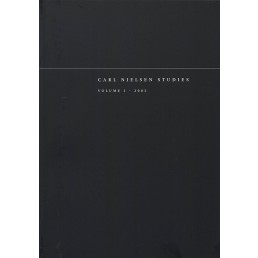Alternative Neo-Riemannian Approaches to Carl Nielsen
DOI:
https://doi.org/10.7146/cns.v5i0.27770Abstract
On the basis of songs or songlike themes from three periods of Nielsen’s career I try to show how Nielsen’s harmonic progressions become simpler while displaying a more refined complexity. I do this on the basis of the theories of the Danish scholar/composers Jorgen Jersild and Jan Maegaard which are, in various degrees, based on Riemannian analysis. The two Danes thus represent an alternative neo-Riemannian approach to harmonic analysis. This approach was developed from 1970 to 1989, the very same years in which Erno Lendvai, David Lewin, Deborah Stein and Harald Krebs wrote their respective groundbreaking works. Even though Jersild’s and Maegaard’s theories were developed independently of these writers, their content communicates with the content of their theories. And even though a theory of foreground harmonic progressions like Jersild’s is seemingly as opposed as possible to a Schenkerian middleground-based harmonic approach, they do actually, in some regards, have something in common, just as in other regards they supplement each other perfectly. I try, through the analyses of Nielsen’s music plus a few other examples (Schumann, Liszt and Wolf), to show how the theories of these above mentioned many writers and others, may be integrated into the two Danish theories. In discussing analytical theories the text is especially conversant with two recent books on Nielsen, Anne-Marie Reynolds’ The Voice of Carl Nielsen (2010) and Daniel Grimley’s Carl Nielsen and the Idea of Modernism (2011), as the two main analyses refer to analyses in Reynolds and Grimley respectively.Downloads
Published
2012-10-01
How to Cite
Nielsen, S. H. (2012). Alternative Neo-Riemannian Approaches to Carl Nielsen. Carl Nielsen Studies, 5. https://doi.org/10.7146/cns.v5i0.27770
Issue
Section
Articles
License
- Authors retain copyright and grant the journal right of first publication with the work simultaneously licensed under a Creative Commons Attribution License that allows others to share the work with an acknowledgement of the work's authorship and initial publication in this journal.
- Authors are able to enter into separate, additional contractual arrangements for the non-exclusive distribution of the journal's published version of the work (e.g., post it to an institutional repository or publish it in a book), with an acknowledgement of its initial publication in this journal.

